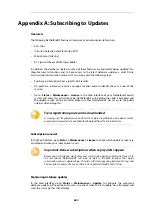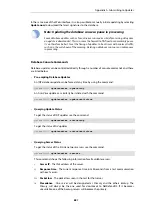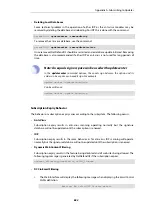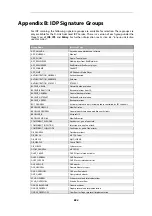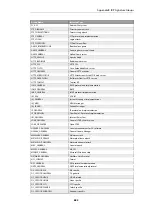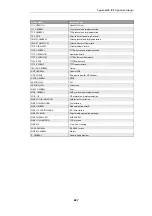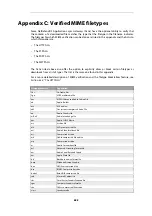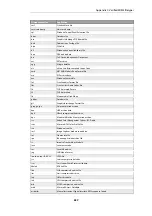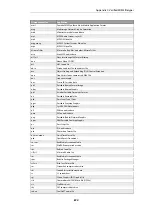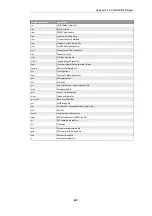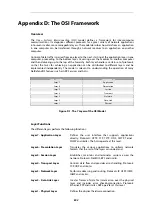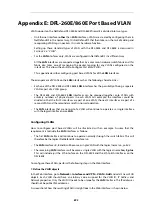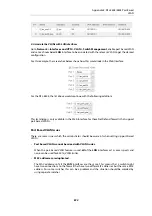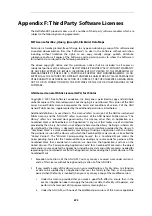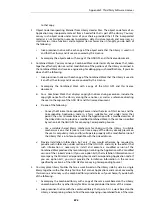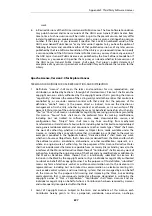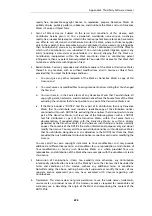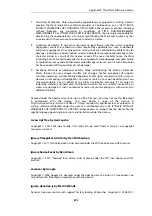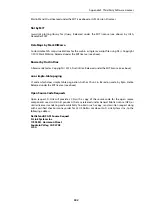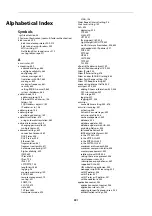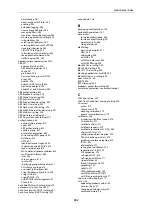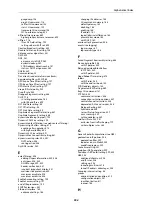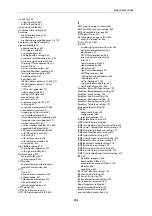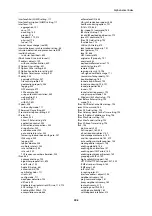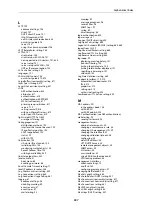
Appendix D: The OSI Framework
Overview
The
Open Systems Interconnection
(OSI) model defines a framework for inter-computer
communications. It categorizes different protocols for a great variety of network applications
into seven smaller, more manageable layers. The model describes how data from an application
in one computer can be transferred through a network medium to an application on another
computer.
Control of data traffic is passed from one layer to the next, starting at the application layer in one
computer, proceeding to the bottom layer, traversing over the medium to another computer
and then delivering up to the top of the hierarchy. Each layer handles a certain set of protocols,
so that the tasks for achieving an application can be distributed to different layers and be
implemented independently. The model is relevant to understanding the operation of many
NetDefendOS features such as ARP, Services and ALGs.
Layer number
Layer purpose
Layer 7
Application
Layer 6
Presentation
Layer 5
Session
Layer 4
Transport
Layer 3
Network
Layer 2
Data-Link
Layer 1
Physical
Figure D.1. The 7 Layers of the OSI Model
Layer Functions
The different layers perform the following functions:
Layer 7 - Application Layer
Defines the user interface that supports applications
directly. Protocols: HTTP, FTP, TFTP. DNS, SMTP, Telnet,
SNMP and similar. The ALGs operate at this level.
Layer 6 - Presentation Layer
Translates the various applications to uniform network
formats that the rest of the layers can understand.
Layer 5 - Session Layer
Establishes, maintains and terminates sessions across the
network. Protocols: NetBIOS, RPC and similar.
Layer 4 - Transport Layer
Controls data flow and provides error-handling. Protocols:
TCP, UDP and similar.
Layer 3 - Network Layer
Performs addressing and routing. Protocols: IP, OSPF, ICMP,
IGMP and similar.
Layer 2 - Data-Link Layer
Creates frames of data for transmission over the physical
layer and includes error checking/correction. Protocols:
Ethernet, PPP and similar. ARP operates at this level.
Layer 1 - Physical Layer
Defines the physical hardware connection.
892
Summary of Contents for NetDefendOS
Page 30: ...Figure 1 3 Packet Flow Schematic Part III Chapter 1 NetDefendOS Overview 30 ...
Page 32: ...Chapter 1 NetDefendOS Overview 32 ...
Page 144: ...Chapter 2 Management and Maintenance 144 ...
Page 284: ...Chapter 3 Fundamentals 284 ...
Page 392: ...Chapter 4 Routing 392 ...
Page 419: ... Host 2001 DB8 1 MAC 00 90 12 13 14 15 5 Click OK Chapter 5 DHCP Services 419 ...
Page 420: ...Chapter 5 DHCP Services 420 ...
Page 573: ...Chapter 6 Security Mechanisms 573 ...
Page 607: ...Chapter 7 Address Translation 607 ...
Page 666: ...Chapter 8 User Authentication 666 ...
Page 775: ...Chapter 9 VPN 775 ...
Page 819: ...Chapter 10 Traffic Management 819 ...
Page 842: ...Chapter 11 High Availability 842 ...
Page 866: ...Default Enabled Chapter 13 Advanced Settings 866 ...
Page 879: ...Chapter 13 Advanced Settings 879 ...



